If you’ve ever had the frustrating experience of finding unsightly molehills dotting your once-pristine yard, you’re not alone. Moles, those tiny tunneling cute animals, can turn your beautiful lawn into a bumpy mess overnight.
So how to get rid of moles ethically and keep them away forever? In this guide, we’ll cover tips and tricks to reclaim your yard from moles. (Bonus: it works on gophers and voles too!)
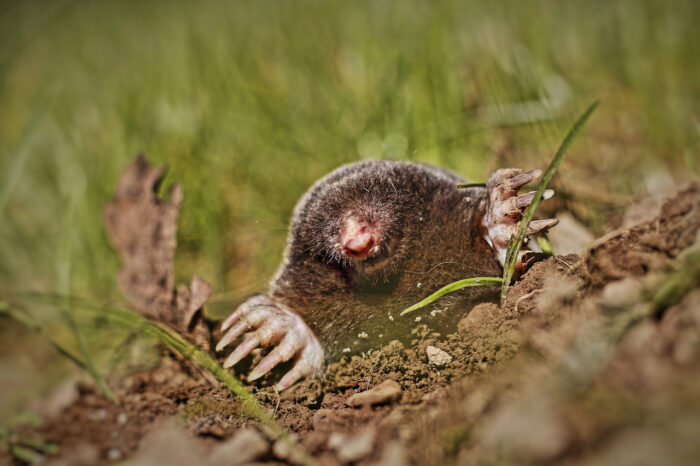
Image credits: Tabble
These small creatures can cause big problems for your garden. Their digging and burrowing not only ruin the aesthetics of your lawn but can also damage plant roots. It’s a real headache for gardeners and homeowners alike. So, how to get rid of moles in your yard? Fortunately, there are effective and humane methods to deal with them.
Let’s walk you through a variety of mole removal strategies, from DIY home remedies and mole traps to professional solutions.
What Are Moles?
First, let’s identify the signs of a mole so you can be sure you’re dealing with these tunneling experts. Once you’re certain that moles are the culprits behind your yard’s upheaval, then you can choose a treatment that suits you best.
Moles are small mammals renowned for their subterranean way of life. They are Talpidaes — small animals with dark fur, tubular snout, and a cylindrical body. They have minuscule eyes adapted for their life underground. Moles rely on primary senses such as touch and smell to hunt prey underground.
They can often be confused with gophers and voles. To distinguish a mole, look at their front paws. They are armed with sharp claws designed for efficient digging. These claws make them exceptional excavators. Moles create intricate tunnel systems underground that serve as both their habitats and hunting grounds.
Moles seek out subterranean prey, such as insects and worms. These intriguing creatures are perfectly adapted to survive a long time beneath the earth’s surface — causing a huge frustration to gardeners.
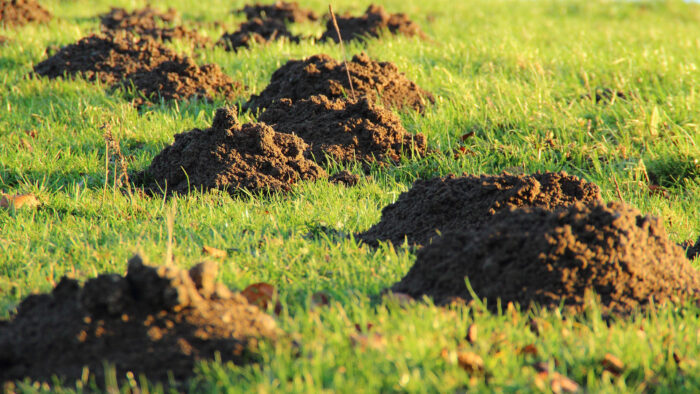
Image credits: meineresterampe
Signs of Moles in Your Yard
Before learning how to get rid of moles, let’s first understand how to detect their presence. Here are some direct signs to watch for:
- Molehills are the most obvious indicator of mole presence. If you see small mounds of excavated soil scattered across your lawn, then you definitely have a mole problem.
- Moles create symmetrical, volcano-shaped molehills. Gopher mounds, on the other hand, are crescent-shaped.
- Moles are active year-round, so if you consistently spot mounds in your garden, it’s likely an ongoing mole issue.
- Moles create shallow surface tunnels to hunt insects. These appear as raised ridges in the lawn and can extend for several feet.
- In some cases, you might hear faint rustling or digging sounds beneath the ground as moles move through their tunnels.
- Moles can damage the roots of plants while tunneling. Keep an eye out for sudden declines in the health of your plants, such as wilting or yellowing, and check for root damage.
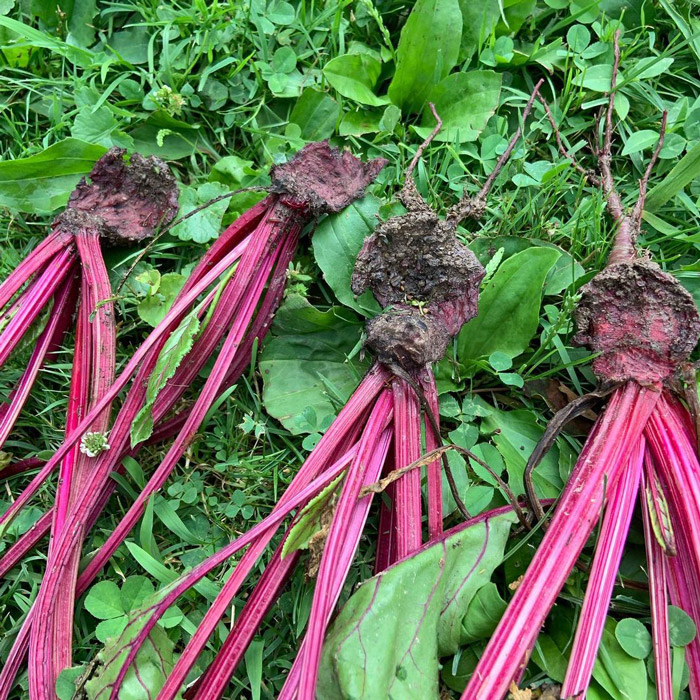 Damage done by ground moles.
Damage done by ground moles.
Image credits: auntlaurie_om
Other Pests Moles Are Often Confused With
Pocket Gophers
Pocket gophers look quite similar to moles. However, their paws are small and not as sharp as mole paws. Pocket gophers have external cheek pouches (hence the name “pocket” gophers) that they use to carry food.
You can also distinguish a pocket gopher by the mounds of soil. Gopher mounds are typically crescent-shaped, while molehills are symmetrical and volcano-shaped. Pocket gophers create deeper, sealed tunnels and are often more destructive to plant roots.
Voles
Voles look like mice. These small rodents don’t tunnel. Instead, they create surface runways in grass and vegetation. Voles feed on plant roots, stems, and seeds. Vole damage is often seen as chewed plants and gnawed bark on shrubs and trees.
How to get rid of gophers and moles: All mole removal methods work on pocket gophers and voles, too.
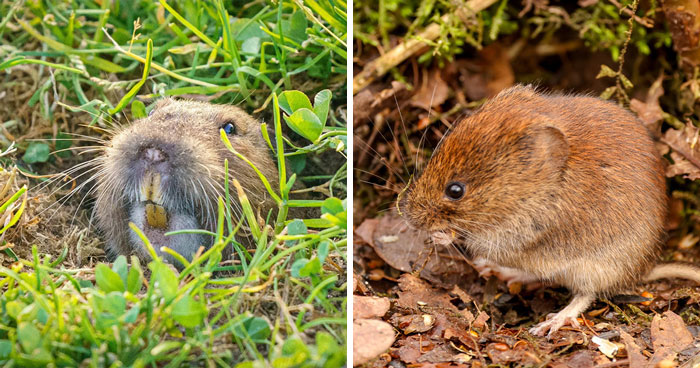 Pocket gophers (left) and voles (right) can cause extensive damage to your plants.
Pocket gophers (left) and voles (right) can cause extensive damage to your plants.
Image credits: restlessdoe and Heather Wilde
Why Do Moles Keep Coming Back to Your Yard?
Food is the biggest culprit that attracts rodents, such as moles and gophers. They are drawn to yards with readily available food. This could be anything from bird feeders and vegetation to uncovered trash cans, pet food left outside, and fallen fruit from trees. These are easy meals for rodents.
Also, just like humans, moles need a stable water source. If your yard has accessible water sources like leaky faucets, standing water, or birdbaths, it becomes more attractive to moles.
Moles are excellent climbers and burrowers, so they can find their way into your garden through small openings in fences, walls, or the ground. Gardens provide shelter and protection from predators and harsh weather conditions, especially cold winters.
They reproduce rapidly, so they’re more likely to stay in an area where they can establish a nesting site. Make sure your yard is well-sealed to deter their entry. Below, we give you some proactive approaches to keeping your yard mole-free.
How to Get Rid of Moles?
So, how do you get rid of moles and voles and keep them away permanently? Let’s explore some common methods:
Trapping and Removing Moles
Trapping is one of the most effective methods to get rid of moles. There are different types of mole traps, such as harpoon traps, scissor traps, and tunnel mole traps.
To insert the mole trap into their burrow, you will need to locate active mole tunnels by identifying fresh molehills. Moles are territorial, so they’re likely to return to their tunnels, triggering the trap when they do.
Check traps regularly and dispose of captured moles away from your yard to prevent re-infestation. This method (if done correctly) is humane and doesn’t involve harmful chemicals.
Using Mole Repellents
Another great way to get rid of moles in your yard is to use repellants.
However, if you have pets or small children, avoid using chemical repellants. Instead, you can use castor oil or granules that can be spread in mole-prone areas. Some people even get rid of ground moles with vinegar. These products create an unpleasant environment for moles, encouraging them to leave.
However, results from this method can be inconsistent, as moles might simply move to another part of your garden. Combine repellents with other methods, such as mole traps, for a comprehensive approach.
Creating a Trench Around Your Yard
Dig a trench around the perimeter of your yard to deter mole entry. Trenching disrupts their travel routes, making it less appealing for them to invade. You can also line the trench with wire mesh or gravel to discourage burrowing.
Note: This method can be effective in preventing new infestations. However, it won’t eliminate the existing mole population. Trenching requires a lot of effort but can be a good long-term solution combined with other control measures.
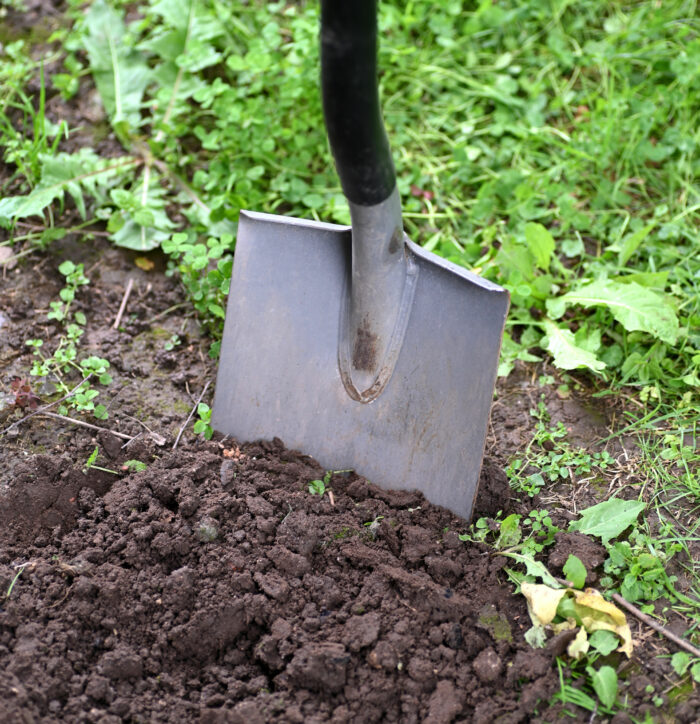
Image credits: Andres Siimon
Ultrasonic Mole Deterrents
Ultrasonic mole deterrents are small battery or solar-powered devices that emit high-frequency sound waves. They are placed in the mole tunnels. Ultrasonic sounds are irritating to moles, encouraging them to vacate the area.
However, their effectiveness can vary, and moles might become accustomed to the sound over time.
Call in the Experts
If you’re dealing with a persistent mole problem, then it may be time to call in the professionals. Mole exterminators are trained to understand their habits and the best strategies for eradication. They have access to specialized equipment, including advanced traps and chemical repellents that are highly effective in managing their population.
They’ll also give you customized solutions to address the root cause of the infestation.
Humane Ways to Get Rid of Moles
If you are dealing with frequent mole activity in your garden, then it’s important to approach the problem ethically and responsibly. These are some solutions to remove moles without harming them:
How to Get Rid of Moles with Vinegar
Using vinegar is a common DIY method for mole control. It’s believed that the smell of vinegar acts as a deterrent.
To get rid of moles with vinegar,
- Thoroughly mix equal parts of white vinegar and water in a spray bottle, ensuring thorough blending.
- Identify fresh molehills or raised ridges to locate active tunnels.
- Apply the vinegar solution directly into the active tunnels.
- Reapply the solution regularly, especially after rainfall or watering, as it may wash away.
Consistency is crucial to maintain the effect of vinegar.
How to Get Rid of Moles and Voles Naturally
- Moles are attracted to soft, well-watered soil. Let the soil dry out a bit so it’s not so easy to dig.
- Encourage their natural predators, such as owls and hawks, by providing suitable habitats, such as nesting boxes or perches in your yard.
- Plant mole-repelling plants like daffodils, alliums, castor beans, marigolds, or the Bradford pear tree to deter the mole population.
- Apply beneficial nematodes (microscopic worms), which prey on grubs and can help reduce the mole’s food source.
Using Pet-Friendly Mole Repellents
Apart from castor oil and vinegar, you can also use natural ingredients, such as garlic and capsaicin, as a chemical-free mole-repellant.
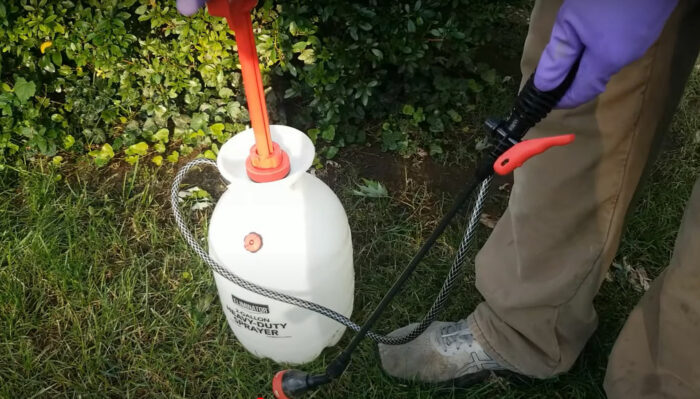
Image credits: Bump
Preventing Moles from Coming Back
You’ll need to take a proactive approach to get rid of moles and voles permanently. Regularly inspect your garden for signs of mole activity, such as new molehills or tunnels. Address new infestations promptly to discourage them from establishing a presence.
Here are some more ways to control mole activity in your garden:
Removing Their Food Source
Moles primarily feed on insects, grubs, and earthworms. Reduce their food source to make your yard less appealing to moles. You can use organic insecticides to eliminate grubs and insects.
Worms and grubs thrive in moist soil, so avoid overwatering your lawn. A healthy lawn with proper fertilization and minimized watering can eliminate the food supply of moles, voles, and gophers.
Keeping Your Lawn Well-Maintained
Lawn care is essential to prevent moles from coming back. Mow your lawn regularly, as it compacts the soil and makes it harder for moles to tunnel through. Consider using drought-resistant grass species that are less attractive to moles. Aerate your lawn once a year using manual aerators. This improves soil drainage and reduces insect populations.
You can also remove debris and excess thatch from your lawn, as moles may use them for shelter. Make sure your lawn environment is less hospitable to moles to discourage them from taking up residence.
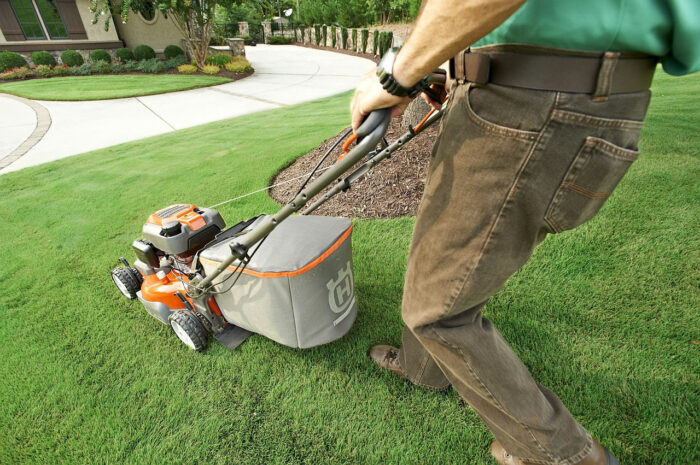
Image credits: Pexels
FAQs for Getting Rid of Moles, Voles, and Gophers
How Do I Permanently Get Rid of Moles in My Garden?
A permanent solution requires consistent effort and using a combination of mole removal methods. Continuously use mole traps and natural repellants to get rid of moles. Focus on eliminating their food source by applying grub control products. Wire meshes and gravel also discourage burrowing.
Why Do I Suddenly Have Moles in My Yard?
If you see a sudden spurt in mole activity, it is likely because there’s an abundant supply of their food sources in your yard. You may even notice an increase in mole activity after the rainy season. Increased moisture creates a favorable condition for moles. Even disruptions to the soil caused by construction or landscaping can bring underground insects to the surface and encourage moles.
If you have dense vegetation or overgrown grass, it can provide an easy cover and make your yard more inviting to moles, as they can tunnel unnoticed.
How Do Golf Courses Get Rid of Moles?
Golf courses have a professional team to protect their manicured greens. They use mole traps and regularly monitor the greens to identify active mole areas and assess the extent of the problem. Golf courses also frequently enlist the services of professional pest control companies to address mole infestations.
They also invest in maintaining optimal turf health through proper irrigation, aeration, and regular mowing, which can make the course less attractive to moles.

Image credits: Rémi Müller
Does Flooding Mole Tunnels Work?
Flooding mole tunnels can damage your yard. It may temporarily disrupt mole activity but is not a reliable long-term solution. That’s because moles are well-adapted to a subterranean lifestyle and can quickly repair tunnels or dig new ones if they are flooded.
Flooding can saturate the soil and make it even more attractive to moles due to increased earthworm activity in damp conditions.
What is The Fastest Way to Get Rid of Moles?
Mole traps are the fastest and the very best solution to get rid of moles. They can quickly eliminate rodents when placed correctly in active tunnels. Place the traps in active tunnels and check regularly to remove trapped moles promptly.
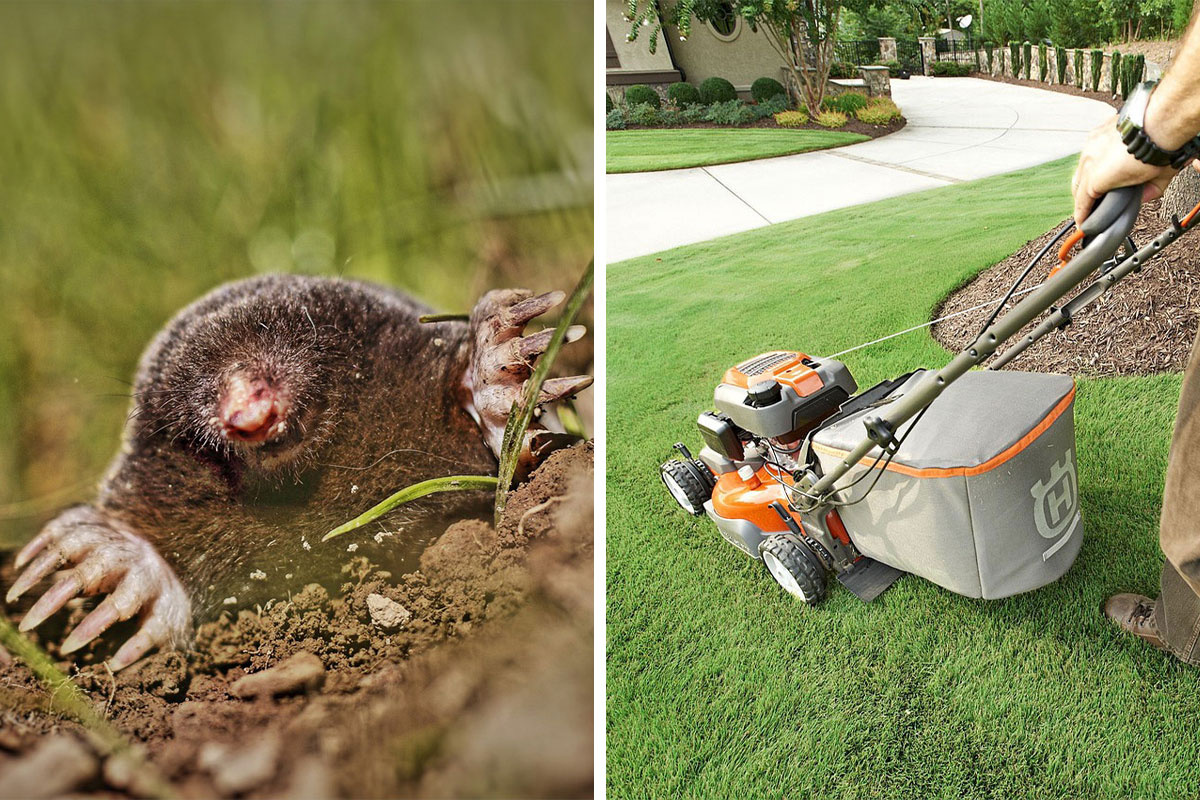




6
2